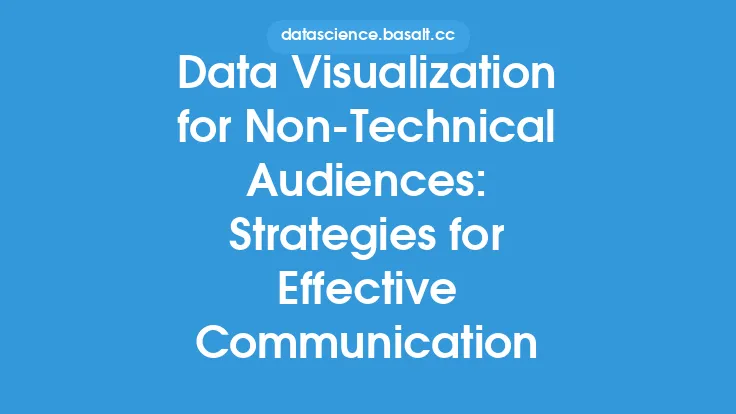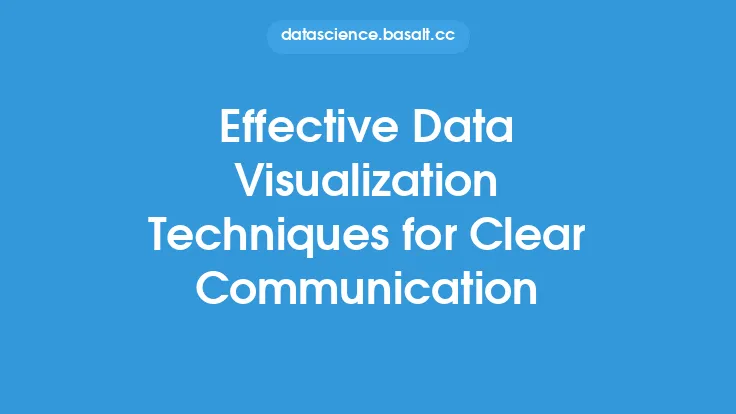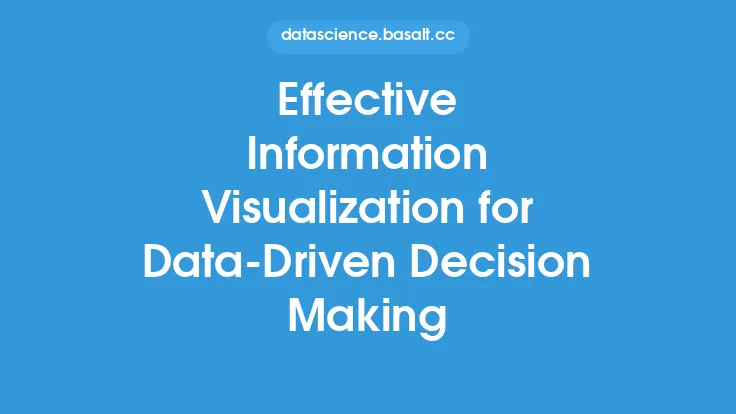Effective data communication is a crucial aspect of information design, as it enables the clear and concise presentation of complex data to various audiences. The primary goal of information design is to facilitate understanding and decision-making by transforming data into actionable insights. To achieve this, designers must apply a set of principles that prioritize clarity, simplicity, and visual appeal. In this article, we will delve into the fundamental principles of information design for effective data communication, exploring the technical and creative aspects that underpin this discipline.
Introduction to Information Design Principles
Information design principles provide a framework for creating clear, concise, and engaging visualizations that communicate complex data insights. These principles are grounded in the understanding that effective communication is not just about presenting data, but about telling a story that resonates with the audience. The key principles of information design include simplicity, clarity, consistency, and visual hierarchy. By applying these principles, designers can create visualizations that are easy to understand, navigate, and interpret, ultimately facilitating better decision-making.
The Role of Simplicity in Information Design
Simplicity is a fundamental principle of information design, as it enables designers to cut through complexity and present data in a clear and concise manner. Simple designs are not only aesthetically pleasing, but they also reduce cognitive load, making it easier for audiences to understand and engage with the data. To achieve simplicity, designers should focus on removing unnecessary elements, using intuitive visualizations, and applying a limited color palette. Additionally, simplicity can be achieved through the use of interactive elements, such as filters and drill-down capabilities, which enable users to explore the data in a more nuanced and detailed way.
The Importance of Clarity in Data Communication
Clarity is another critical principle of information design, as it ensures that the message being communicated is easy to understand and interpret. Clear designs are characterized by a logical and consistent structure, intuitive labeling, and a clear visual hierarchy. To achieve clarity, designers should use clear and concise language, avoid jargon and technical terms, and provide context and explanations where necessary. Furthermore, clarity can be enhanced through the use of visualizations that are tailored to the specific needs and goals of the audience, such as using bar charts for categorical data and line charts for time-series data.
Consistency in Information Design
Consistency is a key principle of information design, as it enables designers to create a cohesive and intuitive visual language. Consistent designs are characterized by a uniform visual style, consistent typography, and a logical layout. To achieve consistency, designers should establish a clear visual identity, use templates and style guides, and apply a consistent color palette throughout the design. Additionally, consistency can be achieved through the use of standardized visualizations, such as using the same chart type for similar data, and providing a clear and consistent navigation structure.
Visual Hierarchy in Information Design
Visual hierarchy is a critical principle of information design, as it enables designers to guide the audience's attention and create a clear narrative flow. A well-designed visual hierarchy is characterized by a clear and consistent structure, intuitive grouping, and a logical ordering of elements. To achieve a visual hierarchy, designers should use size, color, and position to create a clear visual flow, group related elements together, and use white space and negative space to create a clear and uncluttered design. Furthermore, visual hierarchy can be enhanced through the use of interactive elements, such as hover effects and animations, which provide additional context and emphasis.
Technical Aspects of Information Design
From a technical perspective, information design involves a range of skills and tools, including data analysis, visualization, and interaction design. Designers must be proficient in a range of software tools, such as Tableau, Power BI, and D3.js, and have a deep understanding of data structures, statistical analysis, and data visualization principles. Additionally, designers must be able to work with large and complex datasets, applying data manipulation and analysis techniques to extract insights and create meaningful visualizations. The technical aspects of information design also involve considerations of accessibility, usability, and performance, ensuring that the design is optimized for a range of devices, browsers, and audiences.
Best Practices for Effective Data Communication
To ensure effective data communication, designers should follow a set of best practices that prioritize clarity, simplicity, and visual appeal. These best practices include using intuitive visualizations, providing clear and concise labeling, and applying a consistent visual style throughout the design. Additionally, designers should consider the audience's needs and goals, tailoring the design to their specific requirements and preferences. Furthermore, designers should test and iterate the design, gathering feedback from stakeholders and users to refine and improve the visualization. By following these best practices, designers can create effective and engaging visualizations that communicate complex data insights in a clear and concise manner.
Conclusion
In conclusion, information design principles play a critical role in effective data communication, enabling designers to create clear, concise, and engaging visualizations that facilitate understanding and decision-making. By applying principles of simplicity, clarity, consistency, and visual hierarchy, designers can create visualizations that are easy to understand, navigate, and interpret. The technical aspects of information design, including data analysis, visualization, and interaction design, require a range of skills and tools, and a deep understanding of data structures, statistical analysis, and data visualization principles. By following best practices and considering the audience's needs and goals, designers can create effective and engaging visualizations that communicate complex data insights in a clear and concise manner, ultimately driving better decision-making and business outcomes.





